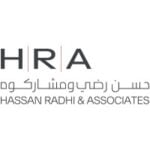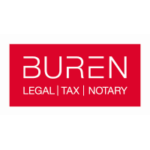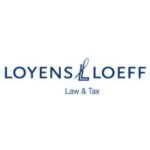-
What are the most common types of corporate business entity and what are the main structural differences between them?
There are several types of legal entities suitable for doing business in Thailand, such as, private limited companies, public limited companies, registered partnerships, limited partnerships, etc. but the most common type is private limited companies which will be the main focus of this guide, although we will also discuss about public limited companies from time to time for the purpose of comparison.
Private limited companies – which are also commonly referred to simply as limited companies – are established pursuant to the Civil and Commercial Code (“CCC”). Each private limited company must have at least two shareholders and at least one director. All shares in a private limited company must be subscribed to by a shareholder, so there are no authorised but unissued shares in private limited companies under Thai law. However, the CCC does not require that 100% share capital must be paid for by the shareholders upon subscription of shares. The minimum paid-up capital required under the law is only 25% of the par value per share. Therefore, it is possible and quite common for private limited companies under Thai law to have partially paid-up capital. For example, a company may have THB 100 million registered capital but only THB 25 million paid-up capital. The board of directors of the company may request the shareholders to inject the remaining capital into the company at any time as the board sees fit. Under the CCC, shareholders’ liabilities towards the company are generally limited to the unpaid share capital (if any). Shares in private limited companies may be subject to various share transfer restrictions as may be described in the company’s Articles of Association (“AOA”).
For comparison, public limited companies are established pursuant to the Public Companies Act 1992, as amended. Each public limited company must have at least fifteen shareholders and at least five directors. At least one half of the directors must have residence in Thailand. All shares in public limited companies must be fully paid-up at the time of subscription, but unlike private limited companies, the law allows public limited companies to have authorised by unissued shares. Shareholders in public limited companies generally do not have any liability towards the company because all of their shares must be fully paid-up since the beginning. Share transfer restrictions in public limited companies are allowed only in limited circumstances, for example, to maintain certain rights and benefits of the company or to maintain Thai-foreign shareholding ratio which would affect the company’s legal ability to own land or operate certain businesses in Thailand.
Apart from private and public companies, it is also possible to operate business in Thailand through the use of registered partnerships and limited partnerships. However, partnerships are less and less common nowadays because of unlimited liabilities of some or all of the partners.
It is also possible to register in Thailand a branch or representative office of a company that is established under a foreign law. Such registered branch and representative offices are not separate legal entities under Thai law, although a unique 13-digit corporate ID number will be assigned to them by the Thai authority upon registration for tax and other purposes, similar to corporate ID numbers of companies and partnerships which are established under Thai law. Branch and representative offices are even less common due to various legal and practical limitations.
The Thai government agency responsible for registration of companies, partnerships, and branch and representative offices in Thailand is the Department of Business Development (“DBD”) of the Ministry of Commerce, the company registrar.
-
What are the current key topical legal issues, developments, trends and challenges in corporate governance in this jurisdiction?
The key legal issues and challenges concerning corporate governance in Thailand currently revolve around embezzlements, frauds, and falsification of financial and other records of several high-profile listed public companies in Thailand by the management of the companies through made-up international transactions. According to news reports, each of these recent scandals caused widespread damage to shareholders and creditors of those companies in multi billions Thai Baht.
Another scandal that recently made headlines in Thailand was about a multi billion Thai Baht investment by a major listed public company in Thailand into a real estate development project of a private company which belongs to a family member of the listed company’s founders. This scandal caused the Association of Investment Management Companies to urgently summon a meeting among its members to discuss whether to suspend any further investment in the listed company in question due to the corporate governance issues relating to the investment project.
In addition, the Securities and Exchange Commission (“SEC”) and the Stock Exchange of Thailand (“SET”) are considering tighten up regulations on disclosure of share pledges by the management and major shareholders of listed companies, as a result of several forced sales of shares in many listed public companies in recent months.
Corporate governance issues of private companies in Thailand do not make as many headlines as public companies, most likely because whatever issues they may have, their impacts tend to be limited to a much smaller group of stakeholders. Also, private limited companies are not legally required to report their issues to the general public.
-
Who are the key persons involved in the management of each type of entity?
Both private and public limited companies are generally under control of their respective board of directors who are appointed and can be removed by the shareholders. The board of directors is responsible for overseeing the company’s affairs to ensure compliance with all applicable laws and regulations, as well as the company’s business objectives, the AOA, and resolutions of the shareholders.
Not all directors have the authority to act on behalf of the company. Those who have such authority are commonly referred to as authorised directors; while others are called non-authorised directors. Among the authorised directors, some of them may have broad or narrow authority as may be determined by the board or the shareholders. For example, the managing director of the company (if one is so designated) usually has the authority to act alone on behalf of the company on any matters, save for a limited number of matters that the shareholders’ approval is specifically required by law. By contrast, some authorised directors may have very limited authority to only act on behalf of the company only in connection with routine filings and interactions with some selected Thai government agencies, but they cannot act on behalf of the company in other scenarios, e.g., signing contracts with other parties. In addition, some authorised directors may be required to act jointly with other authorised directors. The information regarding authorised directors of each company and the scope of their authority is generally described in a document called Company Affidavit (also known as a Company Certificate) which can be obtained from the DBD by anyone with a nominal government fee. However, some companies may also have detailed rules and restrictions concerning the authority of their directors written in their AOA which must be registered with and can also be obtained from the DBD.
Technically speaking, the board of directors of companies established under Thai law, whether private or public, has only one-tier. Nevertheless, it is quite common for bigger companies to internally create an executive committee comprising of only some members of the board.
For listed companies, the law additionally requires at least one-third of their board members (but in any event not less than three directors) to be independent directors. Independent directors form an audit committee of the company, with specific duties under the law to monitor and review the company’s reporting obligations and other compliance and internal control measures. Independent directors may not hold more than 1% of shares in the company and may not have other disqualifications as prescribed by law, such as, being an employee of the company or having business relationships with the company or having personal relationships with the company’s executives, etc.
Many listed companies also create other committees from among members of their board of directors, such as, a nomination committee, a compensation committee, a risk management committee, a corporate governance committee, etc.
Thai companies do not necessarily have officers, such as, the Chief Executive Officer, the Chief Financial Officer, the Chief Operating Officer, the General Counsel, etc. However, the board may create such positions, appoint individuals to such positions, and assign responsibilities to them as the board sees fit. Individuals holding these positions may act on behalf of the company under a power of attorney duly executed by the authorised director(s) of the company. These executives are considered employees of the company. Therefore, their relationships with the company are generally governed by the Thai labour laws.
Partnerships are represented by their partners. Not all partners have the authority to represent the partnerships though. For example, a limited partnership must have at least one partner with unlimited liabilities and a partner with limited liabilities. Only the partner with unlimited liabilities has the authority to represent the partnership.
Branch and representative offices of foreign companies are represented by the branch or representative office manager, as applicable, who is appointed under a power of attorney that is duly executed pursuant to the relevant company law of the country in which the foreign companies were established. A copy of such power of attorney must be submitted to the DBD for public records.
-
How are responsibility and management power divided between the entity’s management and its economic owners? How are decisions or approvals of the owners made or given (e.g. at a meeting or in writing)?
The board of directors collectively has the authority and responsibility to overall manage the company’s affairs, provided that they must do so in accordance with applicable laws and regulations, the company’s business objectives, the AOA, and resolutions of the shareholders.
The board of directors also have various specific responsibilities under the law, such as:
- Maintaining books and accounts of the company including the shareholder registry, the share certificate book, minutes books, etc.;
- Having the financial statements prepared and audited every 12 months;
- Convening an Annual General Meeting of the Shareholders (“AGM”) within four months from the end date of each fiscal year to approved the audited financial statements and other matters;
- Submitting an updated list of shareholders of the company to the DBD within 14 days (for private limited companies) or within one month (for public limited companies) from the date of the AGM;
- Submitting the approved audited financial statements to the DBD within one month from the date of the AGM;
- Notifying shareholders of dividend declaration and payment;
- Offering capital increase shares to the shareholders in proportion to their respective shareholding;
- Convening an Extraordinary General Meeting of the Shareholders (“EGM”) as necessary or upon request of shareholders holding in aggregate at least 20% of the total number of issued shares or when the company’s aggregate loss reaches 50% of its capital;
- Registering various company changes with the DBD within 14 days from the date of relevant event (e.g., director resignation or appointment, passing of a special resolution, etc.);
- Notifying creditors of important events, such as, a capital reduction, amalgamation, and dissolution of the company.
On the other hand, shareholders do not have direct control or responsibilities over the company’s affairs or operations and do not have direct access to most of the company’s documents and information. Strictly speaking, the law only requires the company – acting through the directors – to grant to its shareholders access to the following documents: (1) the company’s shareholder registry, (2) minutes books, and (3) audited financial statements. Whether or not the shareholders can access any further information of the company depends on the cooperation of the directors. However, the shareholders collectively have the power to appoint and remove directors as they see fit, subject to conditions which may be stipulated in the AOA (for example, appointment and removal of certain directors may require consent from a particular group of shareholders) or a shareholders’ agreement (if any). Therefore, uncooperative directors may be removed from office if the shareholders requiring disclosure of the company’s information can gather sufficient votes.
The shareholders, through their meeting resolutions, can also set out rules and regulations for governance of the company, which may – to a certain extent – differ from the provisions of the law. For example, the AOA – which is approved and may be amended from time to time by the shareholders with a supermajority vote of 75% of more – may stipulate that certain key business decisions must be proposed to the shareholders for approval, thereby limiting the authority of the directors.
The following matters legally require approval from the shareholders of the company:
- Appointment and removal of directors;
- Remuneration of directors (if any);
- Amendments to the authorised signatory conditions (unless the AOA explicitly permits the board to amend the same);
- Appointment and removal of auditors;
- Remuneration of auditors;
- Declaration of dividends (except for interim dividends which can be declared by the board);
- Audited financial statements;
- Amendments to the AOA;
- Amendments to the Memorandum of Association (“MOA”) which includes key details of the company, such as, the company name, registered capital, list of objectives, etc.;
- Capital increase or decrease;
- Amalgamation of the company with other companies;
- Dissolution of the company;
- Appointment and removal of liquidators;
- Remuneration of liquidators (if any); and
- Conversion of a private limited company to a public limited company.
Unless a higher threshold is required under the AOA, items (1) – (7) requires a simple majority vote, i.e., at least 50.01% of the voting rights exercisable at the meeting; while items (8) – (13) require a supermajority vote of at least 75% of the voting rights exercisable at the meeting.
The following matters legally require approval from the board of directors of the company:
- Convening of a shareholders meeting;
- Appointment of a substitute director to fill in a vacancy in the board; and
- Declaration of interim dividends;
As a matter of practice, the following matters also usually require approval from the board of directors as well:
- Bank account opening and changing banking mandates;
- Real estate transactions; and
- High-value transactions, as may be described in the AOA of each company.
The law is silent on the use of circular resolutions (i.e., passing a board or shareholder resolution without an actual meeting). However, the Thai company registrar has been taking a firm position for many years that such circular resolutions are invalid under Thai law, and hence, a proper meeting must be physically held in order to lawfully pass any resolution, whether at the board or shareholder level.
Following the Covid-19 pandemic, online meetings are now legally allowed in Thailand, with some additional requirements relating to IT security and records of the meeting which are otherwise not applicable to physical in-person meetings.
-
What are the principal sources of corporate governance requirements and practices? Are entities required to comply with a specific code of corporate governance?
The principal sources of corporate governance requirements and practices in Thailand are as follows:
- The CCC which sets out general rules and legal requirements for incorporation and governance of all limited companies in Thailand. The CCC also prescribed various other fundamental legal principles of Thai law, such as, expression of intent, contract law, relationships between a principal and an agent (which also by analogy to relationships between companies and their directors and shareholders), statute of limitation, property law, etc;
- The Act on Offences Concerning Limited Partnerships, Registered Partnerships, Limited Companies, Associations, and Foundations 1956, as amended, which sets out criminal liabilities of companies and their directors in cases of non-compliance with corporate governance requirements under the CCC;
- The Public Companies Act 1992 (“PLCA”), as amended, which sets out the general legal requirements for incorporation and governance of all public limited companies in Thailand;
- The Securities and Exchange Act 1992, as amended, which sets out the rules and regulations for offering of shares and other securities to the public and governance of all listed companies in Thailand;
- Listed companies are also subject to the Corporate Governance Code for Listed Companies 2017 of the Thai SEC which provides guidelines for boards of directors, as the governing body of listed companies, to promote good corporate governance and ensure long-term sustainable value creation;
- The Accounting Act 2000, as amended, which sets out general legal requirements for bookkeeping and filing of financial statements;
- The AOA of each company as may be amended from time to time by the shareholders;
- A shareholders agreement or joint venture agreement, if any;
- If the company in question is owned by foreign shareholders, it may be subject to additional requirements under the Foreign Business Act 1999 (“FBA”) which requires companies with 50% or more shares owned by foreigners to maintain a certain amount of registered capital and, in some cases, a local director who must reside in Thailand. The FBA also imposes a borrowing limit on foreign-owned companies in Thailand under certain circumstances; and
- Other industry-specific laws that might be applicable to the business of the company in question. For example, the Land Transport Act 1979, as amended, requires that at least 50% of the board of directors of companies that are qualified to obtain and maintain a land transport license must be Thai nationals. As another example, the Insurance Act 1992, as amended, requires authorised directors of insurance broker companies to personally have a valid insurance broker license.
-
How is the board or other governing body constituted? Does the entity have more than one? How is responsibility for day-to-day management or oversight allocated?
The board of directors has the overall authority and responsibility to manage day-to-day business of the company. Members of the board of directors are appointed and removed by the shareholders through resolutions passed at the general meeting.
Technically, both private and public limited companies in Thailand have only one board of directors. However, various committees may be formed from a sub-group of directors. For example, an executive committee is usually a sub-group of authorised directors who are more involved in the day-to-day management of the company. On the other hand, listed companies are legally required to have an audit committee making up of independent directors. It is also common for listed companies to have a nomination and compensation committee, a risk management committee, and other committees.
The CCC does not have any particular requirement regarding the composition of the board of directors of private companies, provided that each company must have at least one director. Therefore, unless otherwise stipulated in the AOA, the shareholders may – with a simple majority vote – freely determine the minimum or maximum number of directors as they see fit.
By contrast, public companies must have a minimum of five directors as required by law. The PLCA also specifically requires that at least one half of the directors must reside in Thailand.
The board of directors may delegate the authority to manage day-to-day business of the company to one or more directors with designations such as the managing director or executive directors. Although this is not legally required, it is quite a common practice in Thailand.
The board of directors also has the authority to appoint key executive employees such as CEO, CFO, COO, etc., to be responsible for day-to-day management of the company under supervision of the board.
-
How are the members of the board appointed and removed? What influence do the entity’s owners have over this?
Shareholders have direct influence over the board of directors, as they have the authority to appoint or remove directors through shareholders’ resolutions. Therefore, if the directors’ decisions or actions are not aligned with the shareholders’ interests, they can be removed from office by the shareholders, assuming that the shareholders have sufficient votes to pass such resolutions at a shareholders meeting.
Unless otherwise stated in the company’s AOA, appointment and removal of a director requires a simple majority vote from the shareholders who are present and eligible to vote at the meeting.
In cases where a director leaves their office before the end of their term, e.g., through a resignation or disqualification, the board may appoint a replacement director to fill in the vacancy for the remaining term of the director who vacated the office.
At least one third of the board of directors must retire from office by rotation at each AGM as required by law, with the longest serving director(s) being rotated out each time. However, retired directors are generally eligible for re-appointment without any term limit. As such, the term of office of each director is effectively three years or less. Some companies fix the term of office of their directors at one year only, thereby requiring the entire board of directors to retire and be-reappointed every year at the AGM.
Director changes must be registered with the company registrar within fourteen days from the date of the change, otherwise late filing penalties will be imposed on the company and directors.
-
Who typically serves on the board? Are there requirements that govern board composition or impose qualifications for board members regarding independence, diversity, tenure or succession?
Typically, directors are representatives of the majority shareholder of the the company. This is especially true for private limited companies because a shareholder or a group of shareholders with 50.01% voting rights in aggregate may appoint every single board member as they see fit. Unless otherwise explicitly stated in the AOA, minority shareholders in private limited companies generally do not have any representation in the board unless the majority shareholder allows them to have ones.
The CCC does not impose any restrictions on the number of board members for private limited companies, provided that there is at least one director. Therefore, the general meeting of shareholders has the authority to determine the number of board members as appropriate. The number of directors is sometimes stipulated in the company’s AOA. The CCC also does not specifically require directors to have any particular qualifications, other than they must be bankrupt or legally incompetent. However, the DBD issued regulations prescribing an additional requirement that directors must be at least 12 years of age.
For public companies, at least five directors are required and they must have the qualifications as prescribed in the PLCA as follows: (1) must be of legal age; (2) must not be bankrupt or legally incompetent or quasi-incompetent; (3) must not have been imprisoned by a final judgment for any property-related offense based on dishonest intent; and (4) must not have been expelled or discharged from a government or state organisation or agency based on dishonest performance of duties.
For listed companies, the board composition is further subject to the SEC’s criteria, i.e., at least one-third (but in any event must not be fewer than three members) of the board must be independent directors. An audit committee with a minimum of three members must be appointed from independent directors. Independent directors are usually outside experts, such as, lawyers, accountants, business consultants, academics, former government officials, industry-specific experts, etc. who are invited by the management to serve on the board of listed companies.
Thai law currently does not have any diversity, equity, and inclusion (DEI) requirements with regard to the board composition.
-
What is the role of the board with respect to setting and changing strategy?
Under Thai law, the board of directors plays a key role in setting and overseeing the company’s strategy. The board is responsible for determining the company’s overall direction and oversee the company’s business operations.
-
How are members of the board compensated? Is their remuneration regulated in any way?
The law does not impose any minimum or maximum remuneration for board members. However, director remuneration (if any) requires the shareholders’ approval.
For listed companies, it is quite a common practice for directors to be compensated with meeting allowances (i.e., a fixed sum of money payable to the directors for each meeting attended by the directors).
Executive directors who work full-time for the company may also have monthly salaries, but this is usually because they also serve as employees of the company at the same time, which is legally possible and quite common. As such, if the relationships and remuneration are not properly documented, such monthly remuneration payable to full-time executive directors may lead to arguments between the directors and the company in the future upon retirement or termination of their relationships. This is because, if the directors are also technically employees of the company, they will be entitled to receive severance and other statutory payments under the Thai labour laws upon retirement or termination of their employment. By contrast, directors who are not also employees of the company are not entitled to any statutory compensation upon retirement or termination of their term of office under the Thai company law.
-
Do members of the board owe any fiduciary or special duties and, if so, to whom? What are the potential consequences of breaching any such duties?
In addition to their general duties in managing the company and its business operations, all directors also specifically have the joint responsibilities and owe a fiduciary duty to the company under the CCC as follows:
1. Collection of Share Capital Payment
As discussed earlier, private limited companies may be incorporated with a minimum of 25% share capital payment at the time of the incorporation. The remaining share capital may be called upon at any time by the board of directors. In such case, it is the joint responsibility of the directors to ensure that all shareholders pay the remaining share capital upon request. The CCC prescribed several mechanisms to force the shareholders to pay the remaining share capital, including a late payment interest, voting right suspension, and ultimately a share seizure and auction sale of the partially-paid shares. It is the joint responsibility of the directors to ensure that the remaining share capital is fully paid, which may require enforcement of such mechanisms.
2. Maintenance of Corporate Records and Documents
The CCC requires companies to maintain and keep essential corporate documents at the company’s office, ensuring that shareholders are able to access them during business hours. It is the directors’ duty to prepare and preserve these records, including the shareholders’ register book, minutes of shareholders’ and board of directors meetings, and other books and accounts of the company. Additionally, directors are responsible for issuing share certificates to the shareholders.
The directors also have a duty to submit specific documents to shareholders and the DBD (company registrar) from time to time, such as providing copies of the shareholders’ register upon request of shareholders and submitting audited financial statements to the shareholders before the AGM and, subsequently, to the DBD.
3. Distribution of Dividends or Interest as Required by Law
Minority shareholders do not have any mean to force the company to pay them any dividends even if the company has significant profits. Declaration of dividends require a shareholders’ meeting resolution (or a board meeting resolution in respect of interim dividends). However, once the shareholders or the board, as applicable, approved the dividends, it becomes the directors’s joint responsibility to distribute the dividends to all shareholders whose names are listed in the company’s shareholder register book in accordance with the relevant resolution. The same also applies to interest. If the company is required by law to pay any interest, its is the directors’ joint responsibility to ensure that the interest is actually paid by the company in accordance with the law.
4. Ensuring Compliance with Shareholders’ Resolutions
Another key duty of the directors is to ensure that the company operates in compliance with resolutions passed by the general meeting of shareholders. Although directors have the authority to manage the company’s affairs, they are still under supervision of the shareholders. Therefore, once a shareholder resolution is passed, the board must act accordingly to implement it. This duty is particularly important in cases where the shareholders pass their resolutions to change or update corporate registration. For instance, if there is a change in the board’s composition, the directors must register the change within 14 days from the date of the resolution.
It should be noted that directors’ responsibilities are not limited only to these four matters. The directors also have the general fiduciary duties to manage the company’s business as prudent businessmen.
If any director performs or fails to perform any act that violates the foregoing requirements, the company or the shareholders (as a derivative action in cases where the company fails to take action), as the case may be, may bring legal actions to claim compensation from such director.
Additionally, under various Thai laws, directors may be subject to criminal liabilities if the company violated the law as a result of the relevant directors’ actions or inactions. For example, if a company operates a factory in Thailand without the required factory license, the company’s directors who are in charge of the factory operations may be held personally liable criminally together with the company for such violation of the factory law.
-
Are indemnities and/or insurance permitted to cover board members’ potential personal liability? If permitted, are such protections typical or rare?
It is permitted and common practice for the company to procure such insurance coverage or otherwise indemnify its directors against personal liabilities that may arise in connection with the exercise of their duties.
-
How (and by whom) are board members typically overseen and evaluated?
Since directors can be appointed or removed by the general meeting of shareholders, this process inherently allows shareholders to oversee and evaluate directors’ performance. If shareholders find that any director is no longer suitable for their position, shareholders have the power to remove them through a shareholder resolution, serving as a built-in oversight and evaluation mechanism.
-
Is the board required to engage actively with the entity’s economic owners? If so, how does it do this and report on its actions?
The board of directors is legally required to report the company’s performance in the preceding year and to submit the audited financial statemetns of the company together with the auditor’s report thereon to the shareholders for consideration and approval at each AGM which must be held within four months from the end of each fiscal year. This is the minimum interaction between the board and the shareholders as required by law.
However, there is no requirement for the board of directors to otherwise further engage actively with the shareholders. Shareholders do not have direct control over the day-to-day management of the company; management decisions are made by directors who are appointed by and under the supervision of the shareholders. Each shareholder only has the right to remove or appoint any directors of the company through the general meeting of the shareholders and to participate in shareholders meetings if and when convened from time to time.
-
Are dual-class and multi-class capital structures permitted? If so, how common are they?
Companies can issue two types of shares under Thai laws: ordinary shares and preference shares. It is also possible for a company to have multiple classes of preference shares, while all ordinarily shares always belong to the same class. Each class of shares may also be further divided into multiple groups.
Preference shares usually have different voting rights and/or dividend rights from ordinary shares, but that is not always the case. Preference shares may also come with the right to be first in line to receive dividends and/or residual capital from the company. Restrictions on transfers of preference shares may also be different from those of ordinary shares. Details of such differences must be described in the AOA of the company and, once a class of preference shares is created, these details cannot be subsequently amended.
All shares of the same class must have the same voting rights and dividend rights. However, it is possible for a company to have more than one classes of preference shares with different voting rights and dividend rights between each class.
For example, a company has three classes of shares, i.e., Class-A ordinary shares, Class-B preference shares, and Class-C preference shares. All Class-A ordinary shares must have the same voting rights and dividend rights as other Class-A ordinary shares. Similarly, all Class-B preference shares must have the same voting rights and dividend rights as other Class-B preference shares. The same also applies to Class-C preference shares. However, Class-B preference shares may have different voting rights and dividend rights from Class-A ordinary shares and Class-C preference shares.
Apart from different classes of shares, it is also possible to further divide shares of the same class into different groups with different ancillary rights other than voting rights and dividend rights. For example, a company may divide its ordinary shares into three different groups and give each group the right to nominate a number of persons to be appointed as directors and executives. It is also possible to give a certain group of shares veto rights on certain critical matters of the company. These differences are usually described in either the AOA of the company or an agreement between the shareholders.
Different types, classes, and/or groups of shares are quite common in joint venture companies, which are most of the time private limited companies. Different types, classes, and/or groups of shares are uncommon for public limited companies.
-
What financial and non-financial information must an entity disclose to the public? How does it do this?
All companies must submit their audited financial statements to the DBD annually, within 1 month from the AGM date. The financial statements are available to the public.
Furthermore, private limited companies must submit a copy of the list of shareholders (BOJ.5 form) to the DBD annually within 14 days from the AGM date, while public limited companies must submit their list of shareholders (BMJ.006 form) to the DBD within one month. All of the submitted lists of shareholdesr are available to the public.
In addition, all registration documents submitted to the DBD will be available to the public, including general company information such as details of directors, shareholders, and other registration records, except for personal documents, i.e., a copy of a passport or ID card.
-
Can an entity’s economic owners propose matters for a vote or call a special meeting? If so, what is the procedure?
Shareholders meetings are most of the time summoned by the board of directors. So, practically speaking, shareholders usually propose matters for consideration and voting at the shareholders meeting through their representative in the board, if they have one.
However, any shareholders holding in aggregate at least 20% of the total number of issued shares in the company may also formally submit a request in writing to the board of directors to summon a shareholders’ meeting to consider any particular matters as the shareholders may request. If the board refuses or fails to do so within 30 days upon receipt of the requisition, the shareholders may summon the shareholders meeting by themselves, but only to consider the matters described in their requisition letter to the board.
-
What rights do investors have to take enforcement action against an entity and/or the members of its board?
Directors can be appointed or removed by a resolution of a shareholders’ meeting. Unless otherwise stated in the company’s AOA, appointing or removing a director requires a simple majority of votes from the shareholders who are present and eligible to vote at the meeting.
Practically speaking, if the directors make any decision that is not in line with the shareholders’ interests, instead of challenging such decisions, the shareholders may remove and replace the directors with other persons, assuming that the shareholders have sufficient votes to do so.
In addition, if any director has caused any damage to the company, the company itself is entitled to initiate legal action to seek compensation from the director. If the company chooses not to take legal action, any shareholder may step in and file a claim on the company’s behalf.
However, if the director’s actions have been approved by shareholders during a general meeting, those who voted in favour lose the right to pursue legal action for compensation. Instead, only minority shareholders who opposed the decision may file a lawsuit, and they must do so within 6 months from the date of the shareholders’ meeting.
-
Is shareholder activism common? If so, what are the recent trends? How can shareholders exert influence on a corporate entity’s management?
Shareholder activism remains uncommon in Thailand due to the limited influence that minority shareholders have over corporate decisions. While derivative actions are a potential tool for shareholders to push for changes, they are rarely utilized since any benefits from such actions go to the company rather than the initiating shareholder, reducing the incentive to pursue them. Hostile takeovers present another option, but they demand significant financial resources and are often impractical for companies with a low percentage of publicly traded shares, a common characteristic of many Thai-listed companies.
-
Are shareholder meetings required to be held annually, or at any other specified time? What information needs to be presented at a shareholder meeting?
All companies are required to hold a shareholders’ meeting annually, no later than four months after the end of fiscal year.
A typical AGM agenda includes the following items for consideration and approval by the shareholders:
- a report of the board of directors on the company’s performance in the past fiscal year;
- the audited financial statements of the company and the auditor’s report;
- the appointment of directors in place of those who retire by rotation;
- the appointment of an auditor for the current fiscal year and their remuneration; and
- if applicable, a declaration of dividends and the allocation of funds to a reserve account.
Apart from the AGM, the board of directors may also convene a shareholders’ meeting whenever they deem necessary. This meeting is called an Extraordinary General Meeting (“EGM”). The EGM agenda may include any general business matters, such as approval for director changes, capital increase or decrease, and amendments to the company’s registration details.
-
Are there any organisations that provide voting recommendations, or otherwise advise or influence investors on whether and how to vote (whether generally in the market or with respect to a particular entity)?
Organisations that provide voting recommendations or otherwise advise or influence investors on whether and how to vote are more common in a listed company than in a private limited company. Such organisations are, for example, institutional investors, the Association of Investment Management Companies, and the Thai Investors Association. These organisations might not necessarily provide voting recommendations to investors directly, but they may indirectly influence investors with their reactions to controversies surrounding listed companies.
-
What role do other stakeholders, including debt-holders, employees and other workers, suppliers, customers, regulators, the government and communities typically play in the corporate governance of a corporate entity?
Corporate governance is shaped by a diverse range of stakeholders, including debt-holders, employees, suppliers, customers, regulators, the government, and local communities. The extent of their influence varies based on legal provisions, regulatory standards, and business practices.
- Debt-holders, including banks, impact corporate governance by enforcing loan covenants, requiring financial reporting, and conducting risk assessments. They can set restrictions on a company’s financial activities, such as capping borrowing levels, or limiting certain investments.
- Employees impact corporate governance by participating in workplace decisions, negotiating as unions, and reporting unethical behaviour.
- Suppliers influence corporate governance through agreements, ethical sourcing requirements, and supply chain transparency demands. Many global companies in Thailand have supplier codes of conduct to ensure compliance with environmental, social, and governance (“ESG”) standards.
- Customers influence corporate governance through their buying choices, brand perception, and advocacy. As ESG concerns grow, they demand ethical practices, transparency, and accountability. In response, Thai companies are strengthening consumer protection policies to build trust and uphold corporate responsibility.
- Regulators, such as the Securities and Exchange Commission (SEC) and Bank of Thailand (BOT), set corporate governance standards through laws, guidelines, and enforcement actions. Some regulators also monitor financial reporting, corporate disclosures, and shareholder rights protection.
- Government enforces governance through policies and legislations, such as the PLCA, SEC Act, and Trade Competition Act.
- Local communities impact governance, particularly in sectors that affect the environment or social welfare. To foster positive relationships and avoid conflicts, companies participate in corporate social responsibility (CSR) programs.
-
How are the interests of non-shareholder stakeholders factored into the decisions of the governing body of a corporate entity?
The interests of non-shareholder stakeholders, such as, employees, customers, and local communities, are increasingly being considered in the decision-making processes of corporate entities. For instance, the Labor Protection Act ensures that employee rights are considered in decision-making, requiring companies to comply with regulations regarding wages, working conditions, and benefits. Listed companies are required to follow CG Code, which take into account the social and environmental impact of business operations. In addition, Thai companies must adhere to consumer protection laws, ensuring that customers’ interests, such as product safety and fairness, are taken into account in business decisions.
-
What consideration is typically given to ESG issues by corporate entities? What are the key legal obligations with respect to ESG matters?
A. ESG issues are increasingly prioritized by corporate entities as part of their broader strategy for sustainability, risk management, and responsible business practices. ESG issues are typically considered the following:
(a) Environmental Considerations
Companies in Thailand are increasingly focusing on their environmental footprint, including efforts to reduce carbon emissions, manage waste, and conserve resources. Many are prioritizing sustainable practices such as improving energy efficiency, managing waste effectively, and adopting eco-friendly production methods. Climate risk assessments and green innovation are also becoming essential parts of their long-term business strategies.
(b) Social Considerations
Companies are prioritizing labor rights and employee welfare by ensuring fair wages, safe working conditions, and respect for workers’ rights. There is also a rising focus on promoting diversity and inclusion in the workplace to create more equitable environments. Furthermore, businesses are increasingly engaging in community development and supporting local projects and social initiatives.
(c) Governance Considerations
Companies are improving corporate governance by enhancing board diversity, transparency, and accountability. Protecting shareholder rights and upholding ethical business practices are key, with a focus on combating corruption, ensuring financial transparency, and managing businesses with integrity. Additionally, companies are adopting corporate social responsibility (CSR) initiatives to build positive relationships with both internal and external stakeholders.
B. The key legal obligations with respect to ESG matters can be as follows:
(a) Environmental regulations require companies to prevent environmental damage and comply with standards related to waste, pollution, and resource management, as well as regulate emissions and effluents from businesses, ensuring compliance with air and water quality standards. Furthermore, companies planning large-scale projects must conduct an Environmental Impact Assessment (EIA) to assess potential environmental impacts before starting operations.
(b) Labour law that govern employee rights, including working conditions, wages, social security, and benefits. It ensures that businesses adhere to minimum standards in the treatment of workers. In addition, these regulations mandate that companies maintain safe workplaces and protect employees from health risks, ensuring that health and safety practices are in place.
(c) Governance Regulations such as the CG Code that have been established by the SEC provide principles and guidelines on good governance practices. In addition, anticorruption laws should be taken into account to prevent corruption.
(d) Listed companies are required to disclose ESG-related information as part of their annual reports.
-
What stewardship, disclosure and other responsibilities do investors have with regard to the corporate governance of an entity in which they are invested or their level of investment or interest in the entity?
In Thailand, these responsibilities are primarily set out for investors of listed public companies. The regulatory requirements for corporate governance, stewardship, and disclosure are designed to ensure transparency and accountability in the capital market. However, these obligations are generally not applicable to private limited companies, where the governance and disclosure requirements are less stringent.
-
What are the current perspectives in this jurisdiction regarding short-term investment objectives in contrast with the promotion of sustainable longer-term value creation?
In recent years, there has been a growing focus on ESG factors, in line with global trends. Investors, especially institutional ones, are showing more interest in companies that prioritize sustainability, ethical practices, and long-term growth. The SET has been supporting for sustainable business practices and urging listed companies to implement ESG frameworks.
Thai companies, particularly larger corporations, are slowly moving away from a focus on short-term profits and adopting a strategy centered on long-term value creation. This shift involves prioritizing sustainable growth, innovation, and tackling environmental and social issues that help build long-term business resilience.
Even with the shift towards long-term value, short-term financial returns remain a key focus, especially for certain types of investors like retail investors and short-term traders. These investors tend to prioritize immediate gains, such as capital appreciation and dividend payouts.
Although short-term financial objectives remain important, there is a clear shift towards prioritizing long-term value creation, especially among institutional investors and large companies. The increasing incorporation of ESG factors, regulatory efforts to promote transparency and sustainability, and growing investor awareness are driving a more sustainable investment environment. However, achieving a balance between short-term financial demands and long-term sustainability continues to be challenging, particularly for smaller businesses or those focused on immediate profits.
Thailand: Corporate Governance
This country-specific Q&A provides an overview of Corporate Governance laws and regulations applicable in Thailand.
-
What are the most common types of corporate business entity and what are the main structural differences between them?
-
What are the current key topical legal issues, developments, trends and challenges in corporate governance in this jurisdiction?
-
Who are the key persons involved in the management of each type of entity?
-
How are responsibility and management power divided between the entity’s management and its economic owners? How are decisions or approvals of the owners made or given (e.g. at a meeting or in writing)?
-
What are the principal sources of corporate governance requirements and practices? Are entities required to comply with a specific code of corporate governance?
-
How is the board or other governing body constituted? Does the entity have more than one? How is responsibility for day-to-day management or oversight allocated?
-
How are the members of the board appointed and removed? What influence do the entity’s owners have over this?
-
Who typically serves on the board? Are there requirements that govern board composition or impose qualifications for board members regarding independence, diversity, tenure or succession?
-
What is the role of the board with respect to setting and changing strategy?
-
How are members of the board compensated? Is their remuneration regulated in any way?
-
Do members of the board owe any fiduciary or special duties and, if so, to whom? What are the potential consequences of breaching any such duties?
-
Are indemnities and/or insurance permitted to cover board members’ potential personal liability? If permitted, are such protections typical or rare?
-
How (and by whom) are board members typically overseen and evaluated?
-
Is the board required to engage actively with the entity’s economic owners? If so, how does it do this and report on its actions?
-
Are dual-class and multi-class capital structures permitted? If so, how common are they?
-
What financial and non-financial information must an entity disclose to the public? How does it do this?
-
Can an entity’s economic owners propose matters for a vote or call a special meeting? If so, what is the procedure?
-
What rights do investors have to take enforcement action against an entity and/or the members of its board?
-
Is shareholder activism common? If so, what are the recent trends? How can shareholders exert influence on a corporate entity’s management?
-
Are shareholder meetings required to be held annually, or at any other specified time? What information needs to be presented at a shareholder meeting?
-
Are there any organisations that provide voting recommendations, or otherwise advise or influence investors on whether and how to vote (whether generally in the market or with respect to a particular entity)?
-
What role do other stakeholders, including debt-holders, employees and other workers, suppliers, customers, regulators, the government and communities typically play in the corporate governance of a corporate entity?
-
How are the interests of non-shareholder stakeholders factored into the decisions of the governing body of a corporate entity?
-
What consideration is typically given to ESG issues by corporate entities? What are the key legal obligations with respect to ESG matters?
-
What stewardship, disclosure and other responsibilities do investors have with regard to the corporate governance of an entity in which they are invested or their level of investment or interest in the entity?
-
What are the current perspectives in this jurisdiction regarding short-term investment objectives in contrast with the promotion of sustainable longer-term value creation?





















